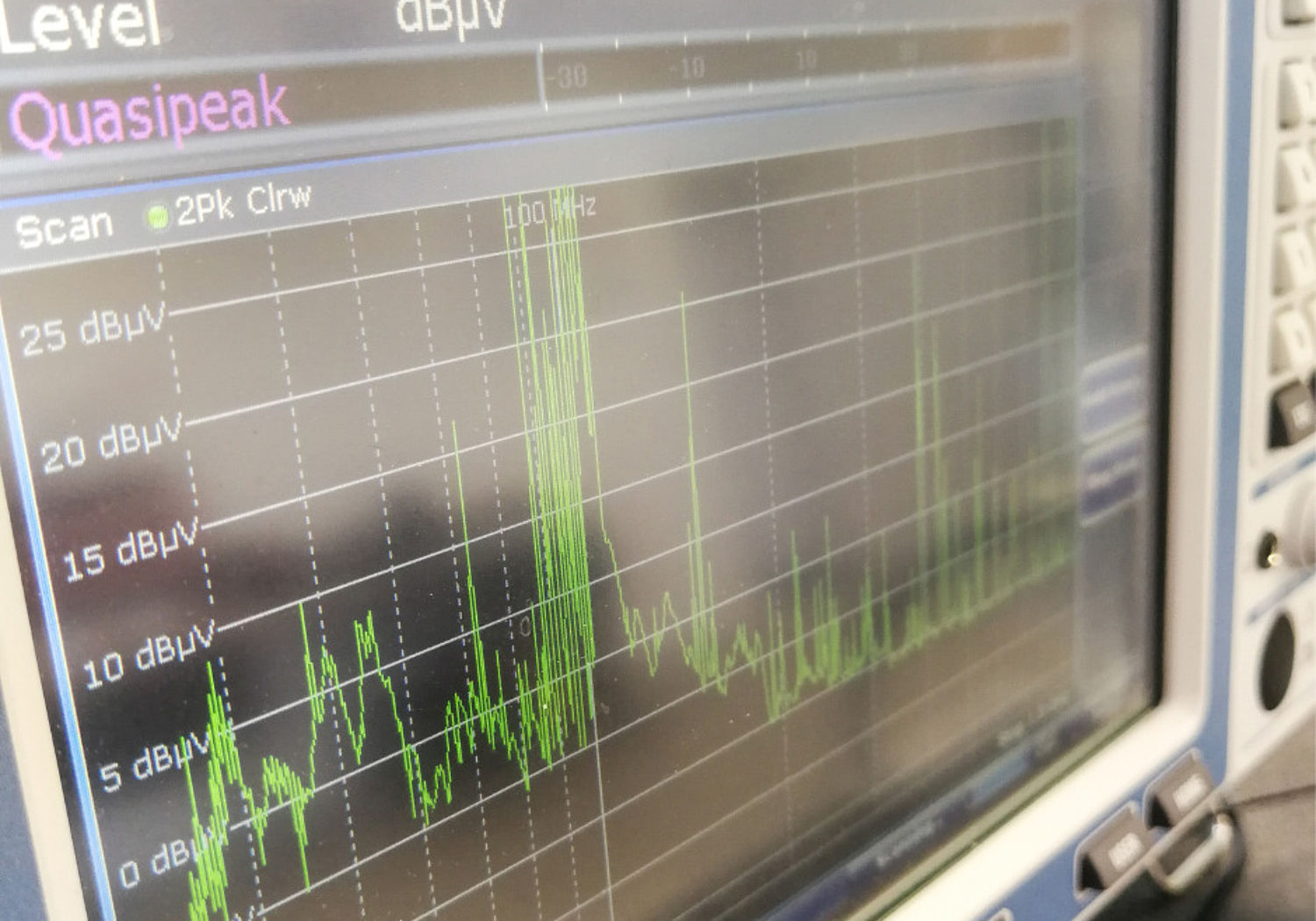Grid measurements of 2 kHz - 150 kHz harmonics to support normative emission limits for mass-market electrical goods
New test methods for high-frequency interference over electricity grids

Electrical products can emit electromagnetic interference, that risks causing malfunctions in connected products, interference with powerline communications and over-heating of grid infrastructure. Product standards and compliance testing regulates potential causes of interference below 2 kHz under the EU Electromagnetic Compatibility (EMC) Directive. New types of electronics, electric vehicle chargers and renewable energy technologies may cause interference in the unregulated ‘supraharmonic’ range of 2 to 150 kHz, so the International Electrotechnical Commission has requested a metrologically-sound measurement method, offering new ways to accurately represent artificial mains networks in the laboratory.
The project formulated and validated a new normative method to measure supraharmonic emissions in grids, conducted a laboratory comparison of the method, and contributed to standards development. The resulting measurement framework provides evidence for product emission limits and support future regulation. New normative methods and apparatus will give rise to new services, while standards for mass-market goods will help ensure reliable operation of products, protect the grid, help develop smart grids, and prevent renewable energy operational issues.
IEEE Access
IEEE Transactions on Instrumentation and Measurement
Journal of Sensors and Sensor Systems
IEEE Transactions on Instrumentation and Measurement
IEEE Transactions on Instrumentation and Measurement
Participating EURAMET NMIs and DIs
LNE (France)
METAS (Switzerland)
NPL (United Kingdom)
VSL (Netherlands)
Other Participants
Technische Universität Dresden (Germany)
Universidad del Pais Vasco / Euskal Herriko Unibertsitatea (Spain)
Università degli studi della Campania Luigi Vanvitelli (Italy)
Information